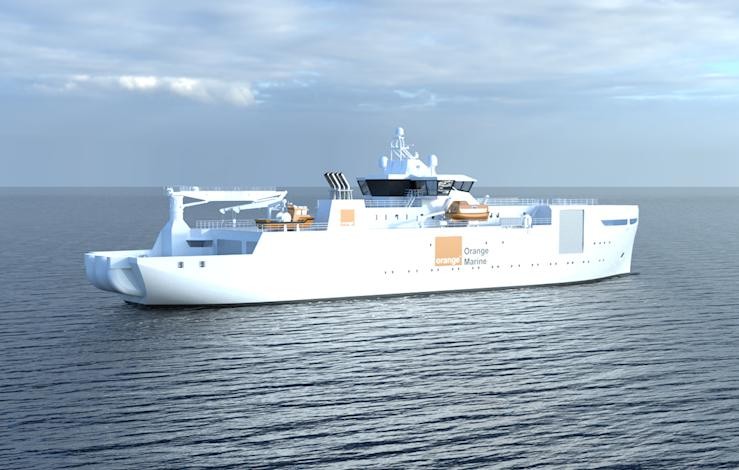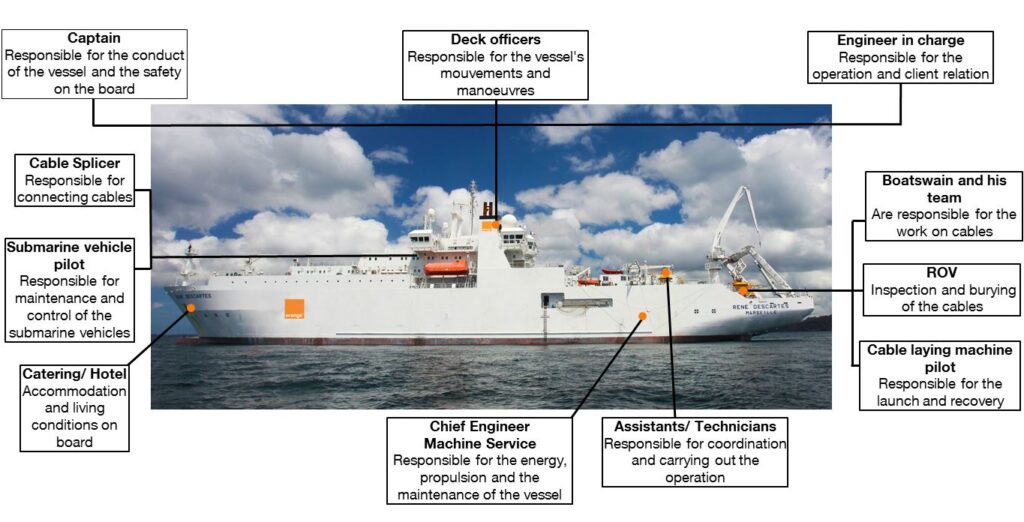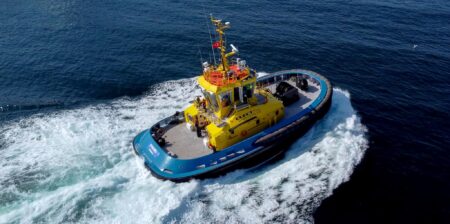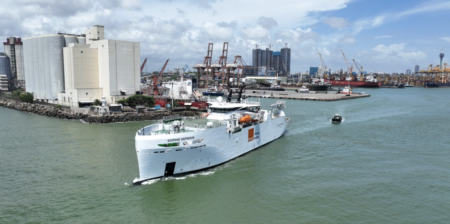Orange Marine has begun building the new cable ship “Sophie Germain”
Orange Marine has begun building the Sophie Germain, a new cable ship designed specifically for maintaining submarine cables. This more efficient cable ship, which will be equipped with the latest technology while being designed to reduce its environmental footprint, will soon be based in La Seyne-sur-Mer.

It took 18 months to draw up the exacting parameters for the specifications of this cable ship, which will consist of 4000 metric tons of steel and be 100 meters long and 18 meters wide.
Ship will be the first ship designed specifically for repairing all types of submarine cables, whether optical fiber telecommunications cables or power cables connecting offshore wind turbines.
Repair vessels are of increasing strategic importance for maintaining global Internet connectivity, more than 98% of which relies on submarine cables. However, despite optimized route planning and protective measures taken during installation, there are, unfortunately, regular interruptions to the operation of these submarine cables. Such interruptions can cause major disruptions to the functioning of the Internet and international telecommunications services. In such cases, a cable ship must take action as soon as possible.
In total, it took 18 months to draw up the exacting parameters for the specifications of this cable ship, which will consist of 4000 metric tons of steel and be 100 meters long and 18 meters wide. She will travel at a speed of 12 knots and her target fuel consumption has been contractually planned. “If discrepancies are noted once the ship sets sail, the manufacturer will be penalized,” said Hugo Plantet.
Fuel consumption has been reduced in particular thanks to Azipod technology, which uses azimuth thrusters capable of rotating 360°. The flow is thus optimally directed and allows the ship to be highly maneuverable to remain on course with a defined heading whatever the external elements. This type of propeller also makes it possible to replace the rudder by connecting the electric motor to the underwater propeller, “like on a speedboat.”

Another technological feature is the generators, which are essential for all diesel-electric systems, such as those used on cable ships. On the Sophie Germain, they will be able to produce up to 6 megawatts of electricity (divided into 2 x 2 megawatts and 2 x 1 megawatts) to power the propellers, and will be used alongside batteries. This so-called “hybrid” configuration will reduce the number of generators used while maintaining the redundancy needed for safe maintenance of cables if a generator unexpectedly shuts down. “We can thus prevent being in a blackout situation, which simply cannot be allowed to happen from a safety and operational standpoint — especially if, for example, we were welding an optical cable. The backup battery system takes over from the failed generator while reducing the boat’s fuel consumption,” Hugo Plantet explained.
In order to reduce the environmental footprint in terms of nitrogen oxide emissions, the ship has a system similar to a catalytic converter on diesel exhausts. When she has been docked, the ship will be electrically connected to the land-based network and will not produce any direct emissions. Solar panels installed in her home port in La Seyne-sur-Mer will supply her with energy that is low in greenhouse gas emissions, covering a large part of her energy consumption when docked. Not to mention the low-sulfur diesel used by Orange Marine’s entire fleet.
Finally, the crew will consist of about 60 people, who will be able to live self-sufficiently for 35 days. The Sophie Germain will be able to store up to 400 m3 of fresh water for the different requirements on board the ship. If that weren’t enough, the cable ship is equipped with fresh water generator systems that convert seawater into fresh water by bringing it to a boil in a vacuum. Numerous methods have also been planned to reduce waste and reprocess it on land.



